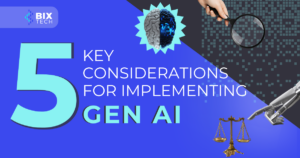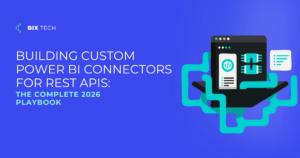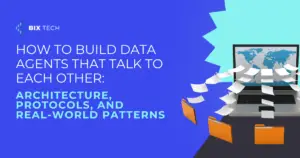You’ve Built a Data Warehouse — What’s Next? Unlocking Real Business Value

Sales Development Representative and excited about connecting people
Introduction: Moving Beyond the Data Warehouse
Congratulations! Your organization has successfully established a Data Warehouse. Your data is unified, clean, and well-organized, offering a comprehensive historical base for analysis. But if you’re like many companies, you may have noticed a new challenge: even with all this data at your fingertips, business users still depend heavily on IT to generate reports and insights. As a result, decision-makers often face delays, and by the time reports are delivered, the information may already be outdated.
So, what’s the next step to truly empower your business and make your data work for you?
Recognizing the Second Stage of Data Maturity
Building a Data Warehouse is a significant accomplishment and represents a key milestone in your organization’s data maturity journey. At this stage, your data is consistent across departments, easily accessible, and historically rich. However, the reliance on IT for every new report or analysis is a common bottleneck. Business executives can’t explore data independently, which limits agility and slows down critical decision-making.
This scenario is typical of organizations in the second level of data maturity. While your data infrastructure is solid, your business intelligence capabilities may not yet be fully developed for self-service and real-time insights.
The Business Impact of Delayed Insights
The consequences of depending solely on IT for reporting can be significant:
- Slow Decision-Making: Reports take time to produce, and by the time they’re ready, the data may no longer be relevant.
- Outdated Information: Using historical data might mean you’re acting on yesterday’s news, not today’s reality.
- Bottlenecked Innovation: Teams miss opportunities to act quickly on emerging trends or operational issues.
In today’s fast-paced business environment, these delays can hinder growth and competitiveness. The solution? Transitioning from a traditional Data Warehouse setup to a more dynamic, user-driven Business Intelligence (BI) environment.
Next Step: Empower Your Team with Business Intelligence
To truly unleash the value of your Data Warehouse, it’s time to implement a robust Business Intelligence (BI) platform. Here’s how BI transforms your data strategy:
1. Real-Time Data Access
Modern BI tools enable daily — or even real-time — updates, ensuring that business decisions are based on the most current data available.
2. Self-Service Analytics
Executives and managers can create their own analyses and generate the reports they need, when they need them, without waiting for IT intervention.
3. Mobile Accessibility
Access your dashboards and insights anytime, anywhere, using mobile BI applications. This flexibility is vital for today’s on-the-go business leaders.
4. Enhanced Collaboration and Planning
BI platforms streamline cross-departmental planning and operational control, making it easier to coordinate strategies and monitor performance indicators.
5. Improved Information Distribution
With centralized dashboards and automated reporting, information can be distributed quickly and efficiently across the organization, breaking down silos and fostering a data-driven culture.
Additional Insights: Why BI Is a Game-Changer
Transitioning to BI isn’t just about technology — it’s about transforming your approach to decision-making. With access to up-to-date, actionable insights, your teams can:
- Spot trends and anomalies early
- React faster to market changes
- Align departments with shared KPIs
- Drive strategic initiatives based on data, not guesswork
If you’re curious about how organizations are revolutionizing operations with advanced data strategies, take a look at our article on the data science business revolution.
Ready to Advance Your Data Maturity?
If your organization is stuck waiting for IT-generated reports or struggling to keep pace with today’s business demands, it’s time to consider upgrading your analytics capabilities with Business Intelligence. By embracing BI, you’ll enable faster, smarter decision-making and gain a competitive edge in your industry.
Conclusion
Having a Data Warehouse is a solid foundation, but it’s only the beginning. The true power of your data is unlocked when business users can independently explore, analyze, and act on information—without bottlenecks. Invest in Business Intelligence to move beyond data storage and transform your organization into a truly data-driven enterprise.
Want to learn more about advancing your analytics maturity? Dive deeper into the differences and benefits of Analytics vs. BI to guide your next steps.
Embrace the next phase of your data journey—empower your people, accelerate your business, and turn insights into action with Business Intelligence.










